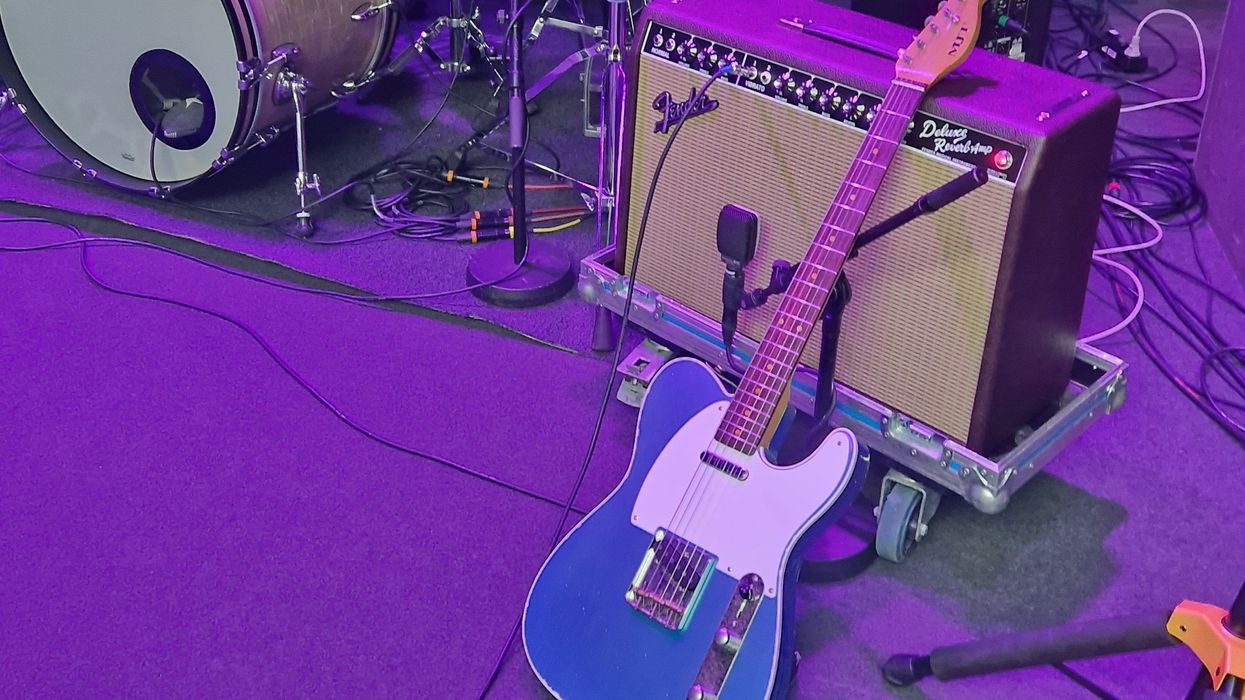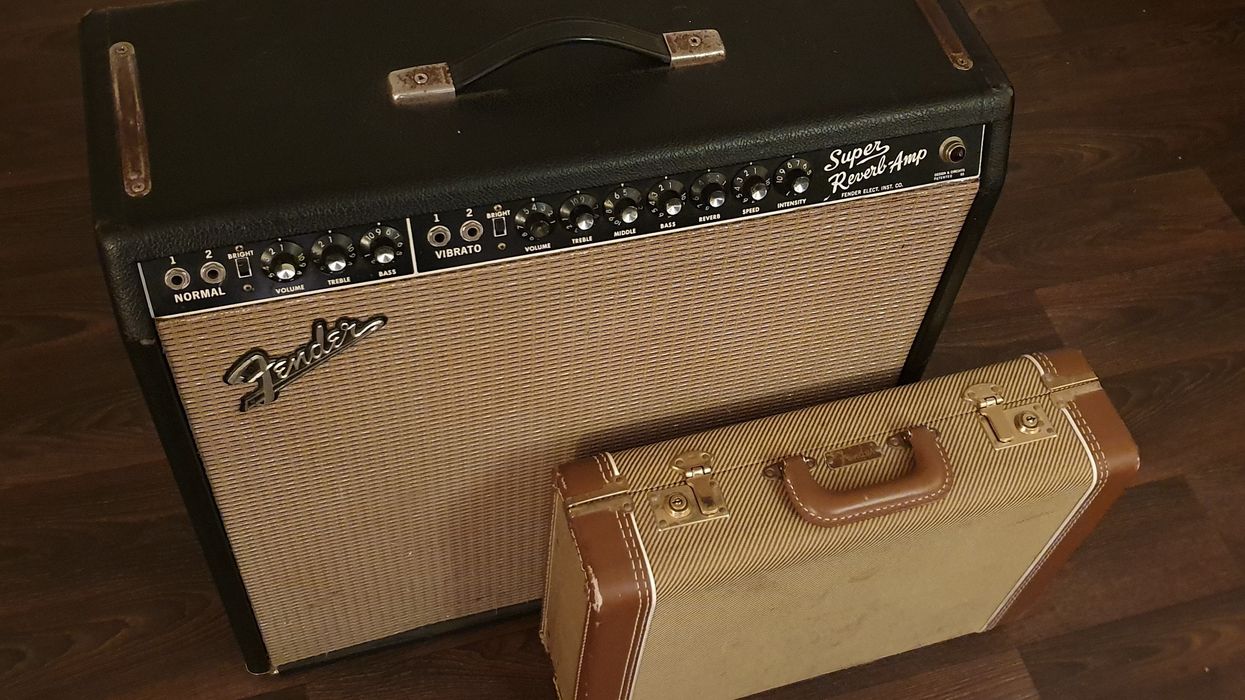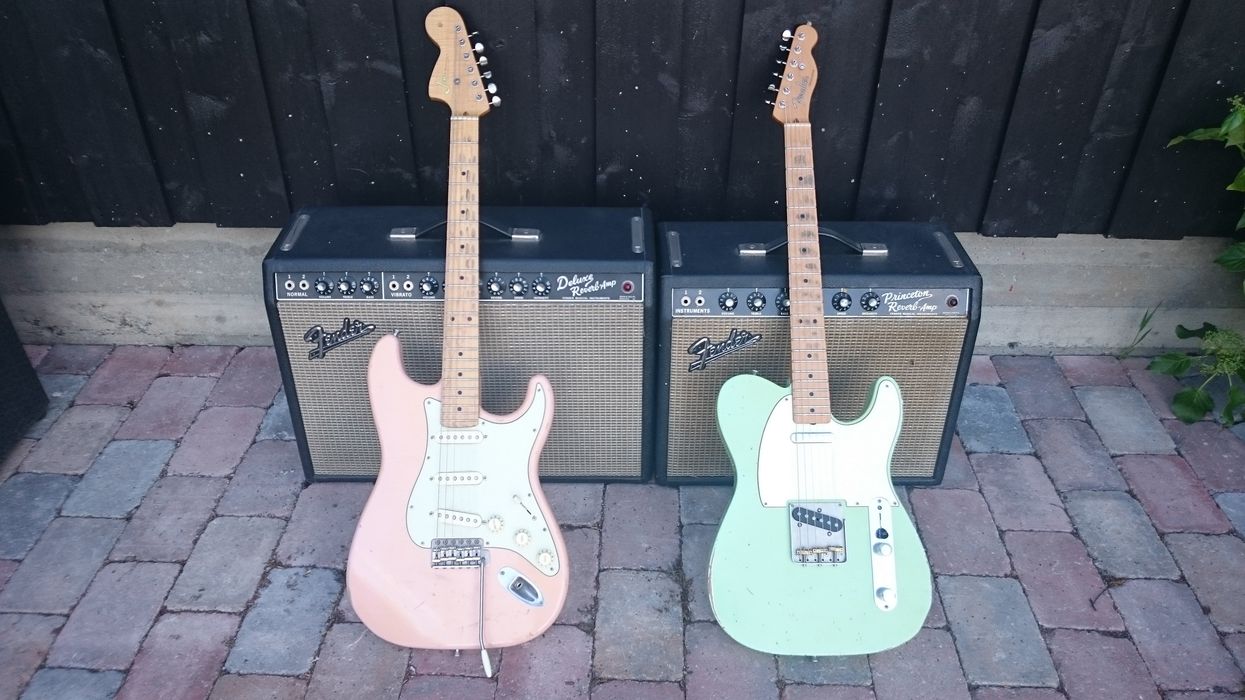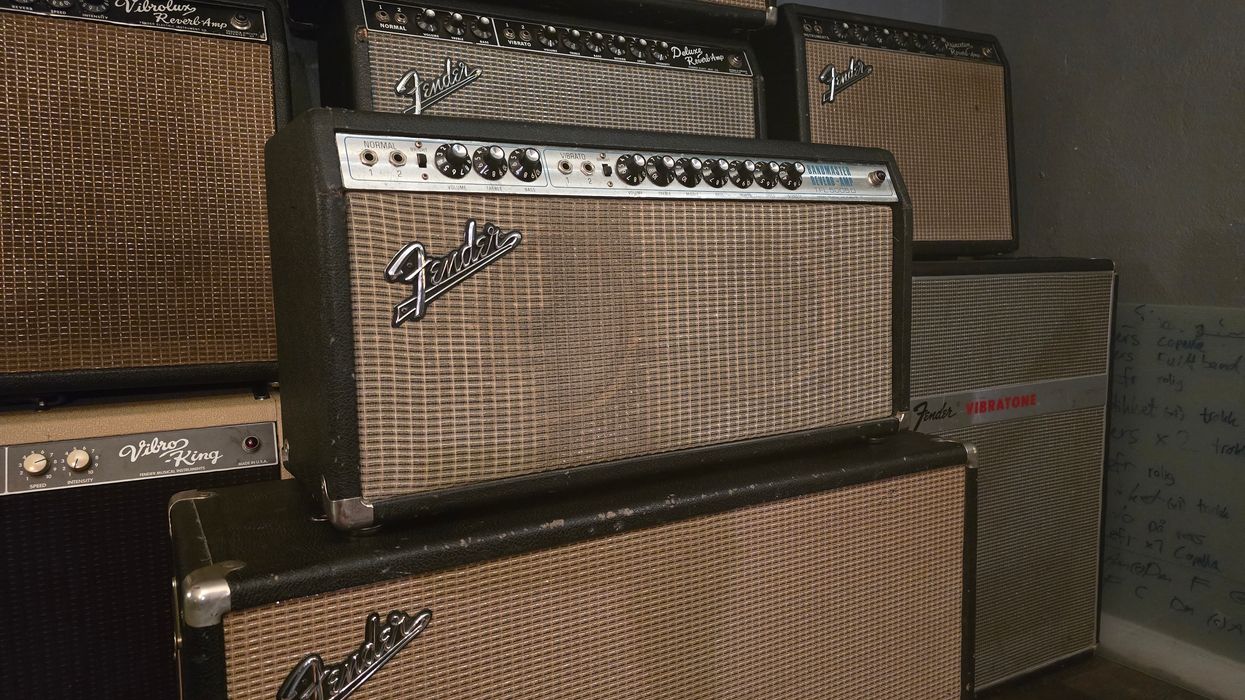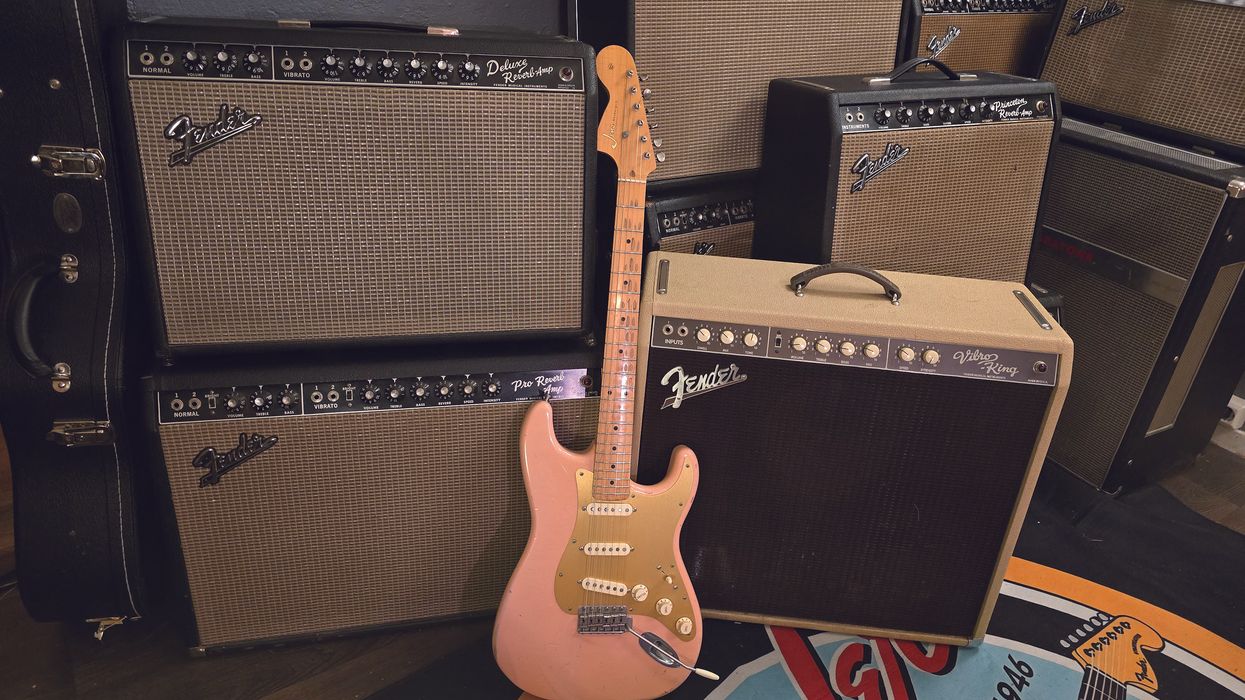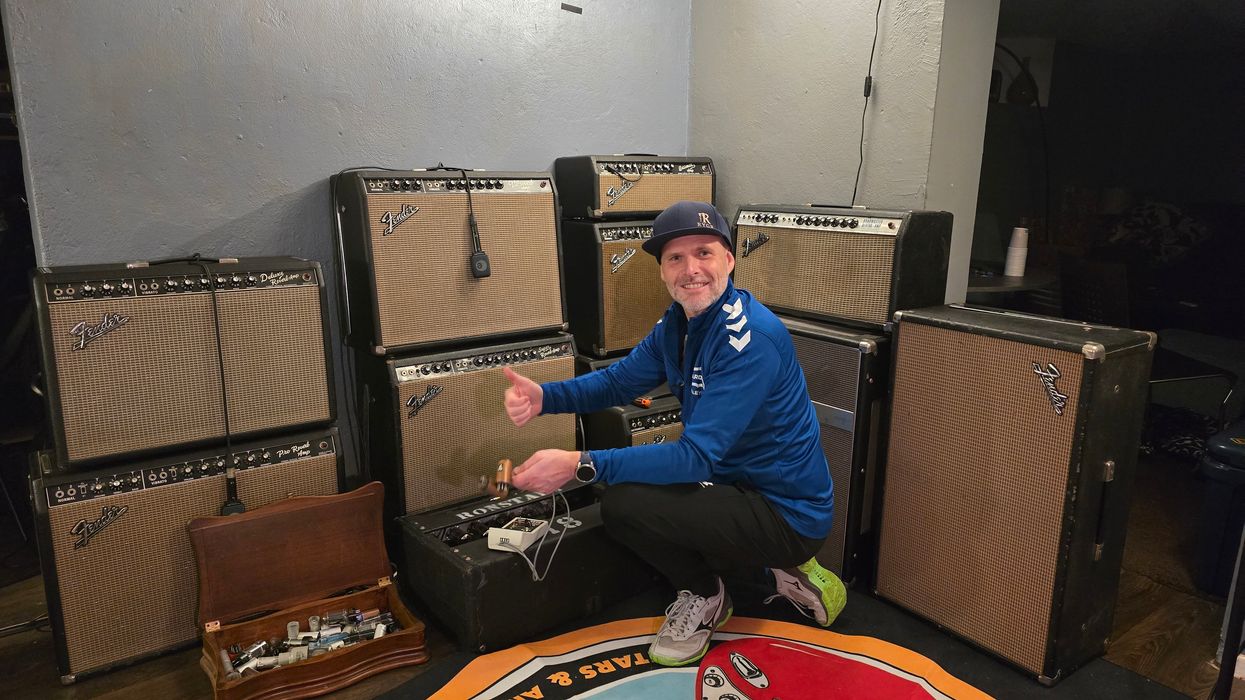Rein in those icy high frequencies with these handy tips.
Classic vintage Fender amps are renowned for their clean, shimmering tones. However, dialing in the “sweet spot” isn’t always straightforward, especially when you're playing on a new or borrowed amp. Pair these amps with Fender guitars—also known for their brightness—and the combination can sometimes result in ear-piercing treble and overwhelming volume. An amp that’s too powerful or an unsuitable guitar pairing can easily derail the musical moment you’re trying to create. So, controlling treble is crucial, particularly with louder amps.
In this article, I’ll share my experiences with Fender amps and how I’ve tamed treble issues through guitar tweaks, speaker swaps, amp modifications, and pedals. My goal is to help you achieve those glorious vintage Fender tones without losing your ears—or your audience—in the process.
Backline Bargaining
I’m extra cautious about bringing my brightest Strats or Teles to gigs with rented backline amps. Newer Deluxe Reverbs, for example, can be particularly tricky with dialing in a smooth tone. These amps often feature bright ceramic speakers and the EQ options are limited—there’s no bright switch to dampen the top end and no mid knob to add warmth.
Here’s what I do: I start by turning down the tone knob on my Okko Twinsonic overdrive pedal, which is very transparent. My old Ibanez Tube Screamers naturally rolled off much of the high end, making them easier to pair with brighter amps.
I also adjust the microphone placement set up by the sound crew. The tone gets brighter the closer the mic is to the center of the speaker cone. I angle the SM57 slightly and aim it closer to the outer edge of the cone, leaving a 3–4 cm gap from the grill cloth. Larger 12" or 15" speakers are more forgiving in this process, while smaller 10" speakers are less so. I’ve encountered challenging amps, like a Super Reverb loaded with 10" JBL speakers featuring aluminum dust caps. These amps sounded much harsher through the PA than they did on stage, making mic placement even more critical.
Dimming the Bright Caps
Bright caps are key components in shaping an amp’s treble response. On the Deluxe Reverb, the bright cap is always enabled, which can make brighter guitars sound harsh, especially at low volumes or when using fuzz pedals. Cranking the amp helps by adding more upper mids to the mix.
For my own Deluxe Reverbs, I sometimes disable the 47 pF bright cap or, more often, install a 25k mid pot on the back panel to add warmth. It depends on the tones I’m chasing.
Smaller amps like the Fender Champ and Princeton don’t have bright caps, which naturally gives them smoother tones. But if they sound too dark or muddy, you can add a bright cap. I installed a 100 pF bright cap on my 1966 Princeton Reverb (which has a Jensen C10N speaker from the same year, though not original to the amp). After experimenting, I settled on a 47 pF cap for just the right amount of clarity.
If you’re up for a bit of DIY, experimenting with bright cap values can significantly shape your tone. Black-panel and silver-panel Fenders typically use 120 pF bright caps, with exceptions like the Deluxe (47 pF) and the Princeton and Champ (none).
Guitar Tweaks for Warmer Tones
Your guitar’s setup can also make a big difference. Thin strings combined with pickups set too close to the strings can result in a thin, overly bright tone. Here’s how I address this:
● Lower the pickups slightly. I start with a 2–2.4 mm gap on the high E string and 2.4–3.3 mm gap on the low E, measured between the pickup pole and the string when fretted at the highest fret. Then, I fine-tune by ear to balance output across pickup positions.
● Use thicker strings for a warmer, fuller tone. I tune my guitars down to Eb to deepen the sound and increase sustain. Keep in mind, though, that this can create a looser, flabbier bass response on smaller amps.
● Hotter pickups add mids and bass, naturally reducing treble dominance. Alternatively, lowering the resistance of the volume pot can smooth out the tone by filtering high frequencies. However, changing pot or cap values will alter how your guitar responds when rolling down the tone or volume knobs.
Speaker Swaps
Finally, and perhaps most importantly, speakers play a huge role in shaping your tone. Swapping speakers or experimenting with extension cabinets is one of the most effective ways to adjust treble, mids, or bass. I’ve written extensively about this in previous articles, but it’s worth emphasizing here: The right speaker pairing can make or break your tone.
I hope these insights help you conquer any treble troubles and coax balanced tones from your Fender amps. Happy tinkering!
